Expedition Mount Baker
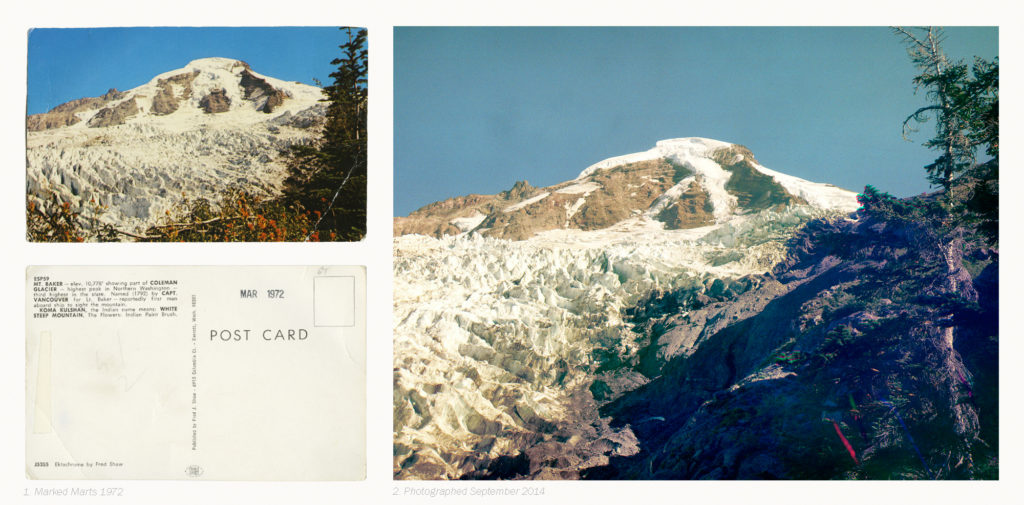
It has been three weeks since photographer Peter Funch and his team Adam Kremer, Anatole Höcek, and Douglas Emery returned from Expedition: Mt. Baker. While these city boys certainly have been enjoying the luxuries of home it isn’t just the foot rubs and lattes that been getting in the way of the project’s distribution, as Funch explains:
The process that we used for the artistic side of the project, RGB tri color separation, gives me a lot to work with. I might have anywhere between 6 and 40 RGB images from the same point of view. Each one of these will have different elements that I can combine. The effect has been pleasantly surprising – the distortions, colors, blending of time, I think, is quite beautiful. But it takes a while to put these images together.
It seems that his trip was full of revelations and good fortune. When we asked Funch to relay a bit about the trip he sent us a copy of his notes from the field:
The crew set up the cameras while I wandered with a postcard in hand. It depicts Mt. Baker in yellow desaturated tones, a product of its age and the printing of the early 70s. The back of the card says that this shot was taken in 1972 by Fred Shaw on Kodak’s Ektachrome, the flowers in the foreground are by Indian Paint Brush, Mt. Baker’s elevation is 10,778’, as well as several other facts. It is a surreal experience looking up from the postcard and seeing almost the exact same image, but in reality many times more magnificent. I feel a bit funny continuously looking at the postcard while I walk back and forth, side to side, keeping my focus on matching the perspectives, ignoring the beauty, and trying not to fall down the sheer drop to my left.
Then it clicked.
I realized in this moment, seeing it for the first time, with the forty-two year old (almost my age) photograph in hand, just how much the glaciers have been receding. The top of the Coleman Glacier is still very similar. I could see the same crevasses cutting their deep lines across the Mountain’s surface… but these lines ended abruptly. Whereas before the ice extended to reach the cliff I stood on, going beyond the composition of the old postcard, it was now dusty bedrock, naked and grey. This wasn’t the huge recession I had seen in comparison photos. I was closer to the top of the glacier where less melting occurs. But it was real and clear and in front of me. The surrealism deepened as I imagined the ebb and flow of time, precipitate accumulation, melting, erosion, day and night, summer and winter, months, centuries, the relative fragility of the glacier, the fragility of myself compared to the ice, and a future person standing in my shoes wondering maybe the same things.
In total Expedition: Mt Baker has generated around 40 images that include approximately 20 recreations of old postcards, the RGB images, and new photographs from more accessible locations for future contributors. We would like to thank Project Pressure’s sponsors Rab UK for providing equipment and clothing for the expedition.
In search of Glaciers in Iran
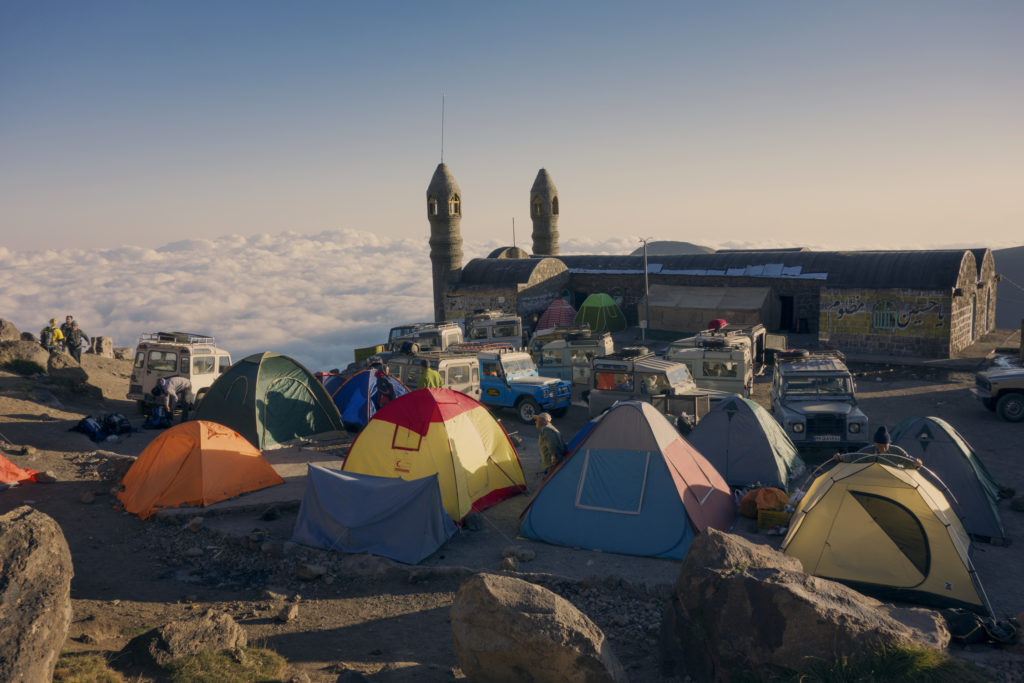 Photographer Klaus Thymann and documentary maker Michael Langhoff have just returned from one of Project Pressure’s most intrepid expeditions to date – a journey into the mountains of Iran to document the vital glaciers of this beautiful yet forbidding land.
Photographer Klaus Thymann and documentary maker Michael Langhoff have just returned from one of Project Pressure’s most intrepid expeditions to date – a journey into the mountains of Iran to document the vital glaciers of this beautiful yet forbidding land.
The team spent 11 days in the country; starting a short distance from Tehran on Mount Damavand, part of the Elborz Mountain range, then completing the expedition at the inactive stratovolcano Mount Sabalan. Along with geotagged images of the region’s glaciers, Klaus and Michael also documented the backdrop of the journey, depicting the country’s heritage, culture and unique landscapes to generate press interest.
Watch this space for more Iran updates!
Heading to Mount Baker
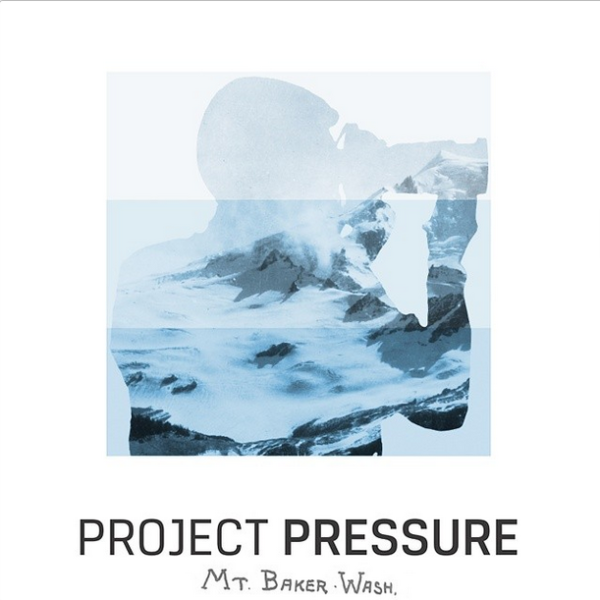
After an excellent Kickstarter campaign we have successfully secured funding for a new expedition. This summer, on behalf of Project Pressure, award-winning photographer Peter Funch will be heading to Mount Baker. Located in Washington State, USA; this Mountain is a unique place where the effects of climate change can be seen from the accumulation of over a century’s worth of photographic documentation.
Following in the footsteps of Ansel Adams, Peter Funch will capture these stunning and individual glaciers before it is too late. The end result will generate a direct comparison to Mount Baker’s historic visual legacy and provide a complimentary narrative to Mount Baker’s rich history and cultural significance. With Funch’s extensive experience this expedition is sure to be an eye-opening and unique opportunity.
Thank you to those who contributed and don’t forget it’s never too late to help, just click the link below.
.
Comparing Khumbu
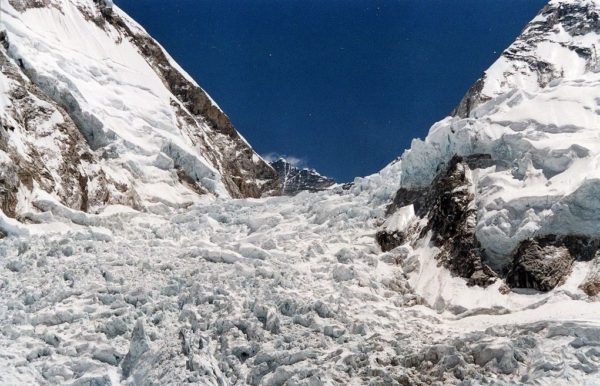
One of greatest things about working on Project Pressure is meeting others who are studying, documenting and trying to understand the world’s glaciers and the ways they’re changing. We recently came across just such a group – a team of glaciologists from Aberystwyth University who are looking at debris-covered glaciers respond to climate change. We’ve lent them a Garmin GPS-enabled camera to help create geo-tagged images in the Khumbu region of Nepal, which can then be compared with previous photographs taken in 2003.
As they explain in more detail on their project webpage:
“Mountain glaciers rapidly advance or recede with variations in climate and modify the hydrological budgets of glaciated catchments. In mountainous regions such as the Himalaya, the impacts of glacier mass loss on water resources are likely to be severe and the risks to human life posed by glacial hazards will increase with climate change. However, making predictions of the impacts of future climate change on the mountain cryosphere is challenging, particularly for large debris-covered glaciers. We combine 3-D glaciological modelling, remote-sensing observations and the collection of field data to quantify how debris-covered glaciers respond to climate change.”
The team are currently ‘somewhere near Everest’ en route to their study area, but you can follow them every step of the way via their Twitter account and on ours.
Photo by Uwe Gille
Project Pressure featured in Fisheye Magazine
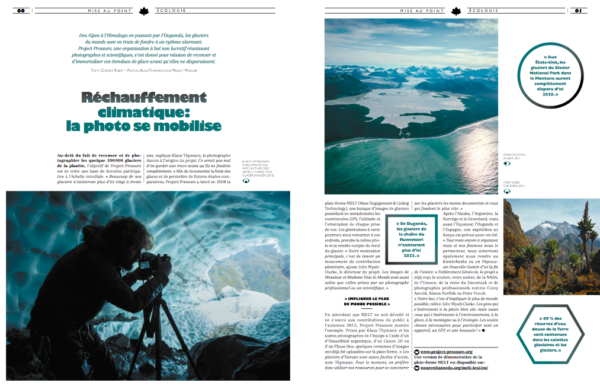
Project Pressure directors Klaus Thymann and John Wyatt-Clarke speak about photography’s role in highlighting climate change in the latest issue of Fisheye. Issue #5 of the French photography/lifestyle magazine features an overview of the project with images from Sweden, Alaska and Uganda, alongside in-depth features on photography and rock music, Henri Cartier-Bresson and images of Madagascar.
Polaroid renews Project Pressure sponsorship
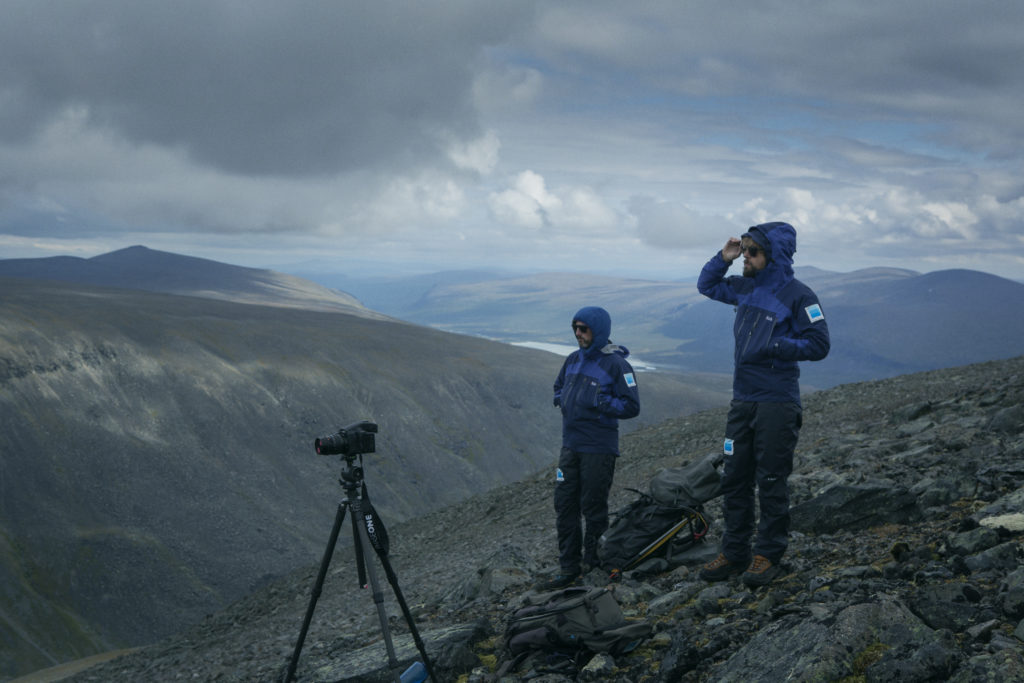
Polaroid Eyewear has reaffirmed its commitment to working with Project Pressure in 2014, paving the way for future collaborations. The good news follows last year’s successful expedition to northern Sweden, made by possible thanks to Polaroid’s support, during which Project Pressure was able to document glaciers north of the Arctic Circle. Working with Swedish glaciologist Per Holmlund, the team mapped out fragile glaciers to visit and undertook a trek to the Pallin Glacier tunnel, recently uncovered by melting ice. Thanks to Polaroid’s ongoing support, we’ll be able to plan more such missions in 2014.
Video: exploring the Pallin Glacier tunnel
Super sharp shooter
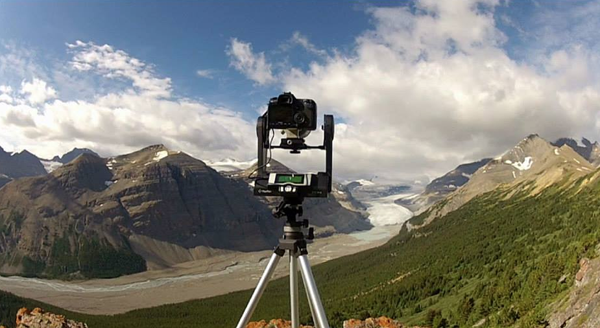
Led by Joe Poulton, the Columbia Icefield Gigapixel Project (CIGP) is creating a series of ultra-high-resolution images of Western Canada’s Columbia Icefield. Beyond the fun of zooming in on the glaciers and surrounding landscape, the images are helping to enhance local studies of the area, and raising awareness of changes along the Columbia River Basin. Project Pressure caught up with Joe to find out more.
Tell us a little bit about the Columbia Icefield.
The Columbia Icefield rests along the Banff Jasper Highway, aka Icefields Parkway. It is one of two hydrological apexes, the other being Triple Divide Peak in Montana, that provide a source of fresh water for three major watersheds in North America. The watersheds fed by the ice and snow that flow away from the slopes of Snow Dome on the Columbia Icefield include the Columbia, Athabasca and Saskatchewan Rivers. These drain into the Pacific and Arctic oceans, and Hudson Bay.
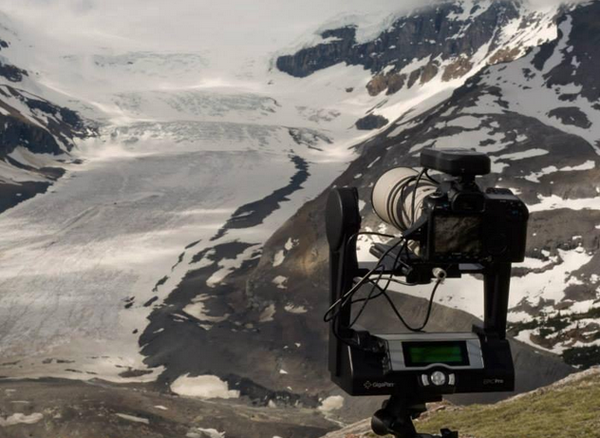
What’s the aim of your project?
The basic initial stage of the project is to acquire high resolution photographic imagery of all the aspects of the Columbia Icefield from specific locations surrounding and on the Icefield. These high resolution images will provide an additional dataset for Dr. Mike Demuth of the University of Saskatchewan to utilise alongside his Icefield studies. Dr. Demuth and his team have been conducting research on the Icefield for the last three or four years. The more complex part, if all goes well, would be to use this project as a tool for the public along the Columbia River watershed to prepare for the changes that could alter how we use the Columbia River as an economic resource in various segments of commerce.
read more…
Exploring The Alaska Range
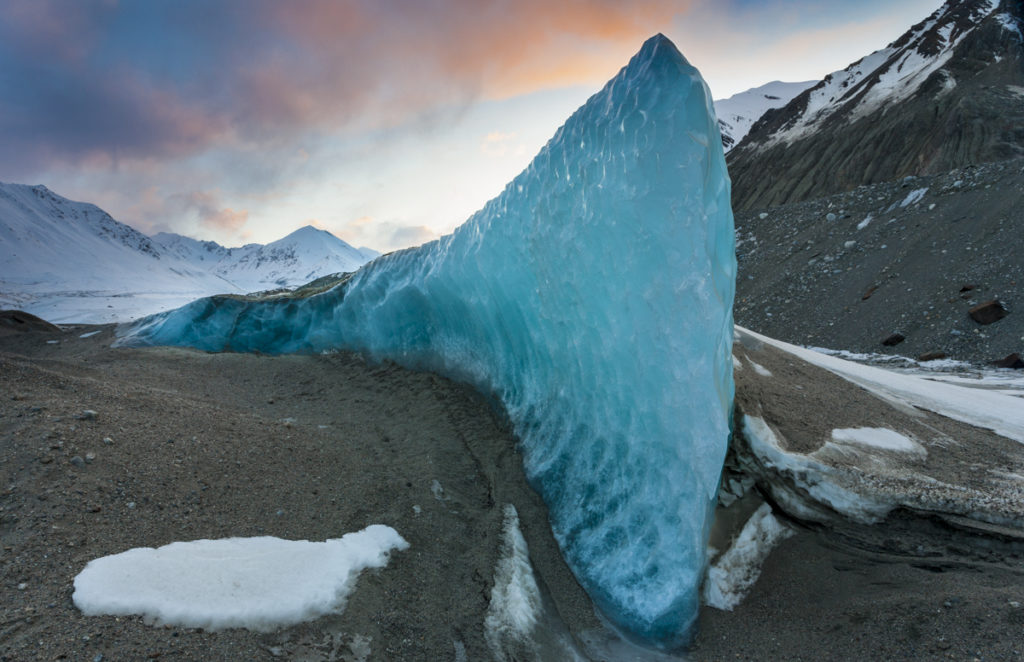
Stretched like a crescent moon across nearly seven hundred miles of wilderness, The Alaska Range is a formidable wall of mountains separating the south central coast from the interior of Alaska. Due to its remote location and vast scale, very little of it has been properly documented – which is where Carl Battreall comes in. Combining a passion for photography and the mountains, he is currently working on a large-format book about the range, while conducting research in the more remote sections for Project Pressure partner Adventurers and Scientists for Conservation. We caught up with him to chat all things Alaska.
Tell us a bit about yourself – where did you grow up and where are you based now?
I grew up on the south side of the central Sierra Nevada mountains in California. Both of my parents worked for the Forest Service. I moved to Santa Cruz, California when I was twenty. I worked as a custom Ilfochrome printer, while studying classic, large format, black and white photography with some of the modern masters. In 2001, I moved to Alaska, so I could be near big mountains and glaciers. I am currently living in Anchorage, Alaska with my wife Pam and son Walker.
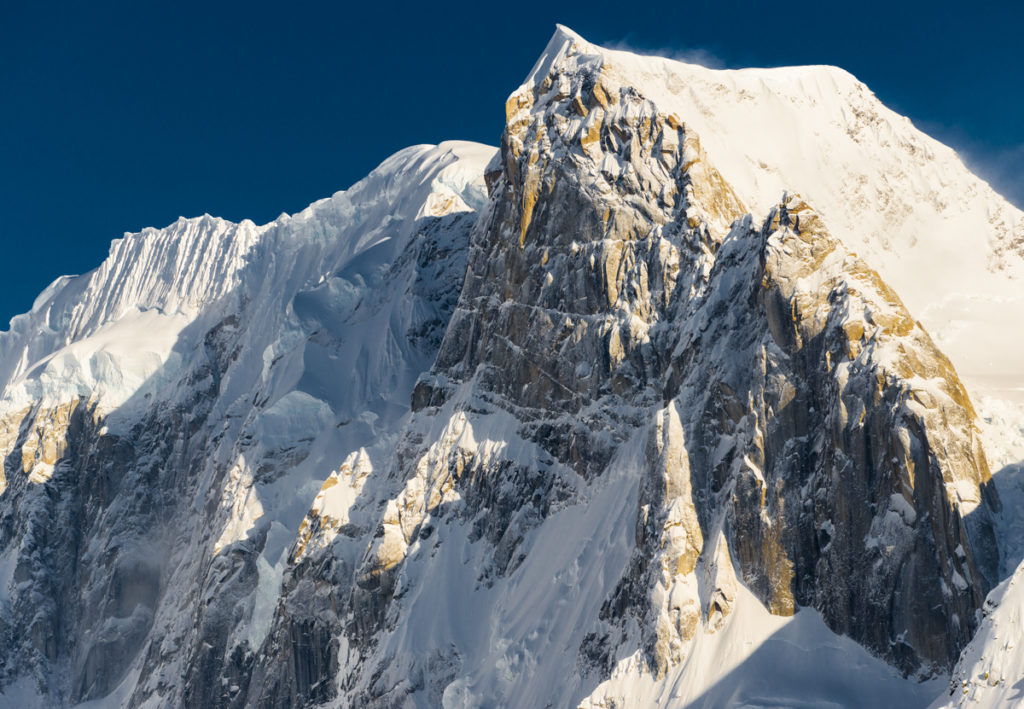
read more…
Peter Funch joins Project Pressure
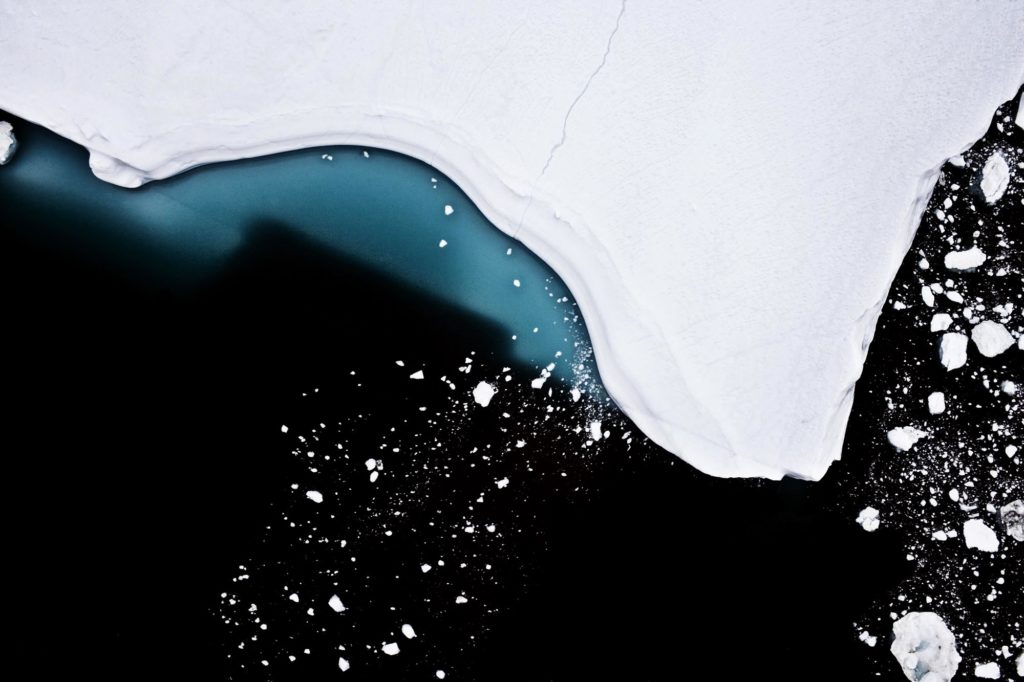
Project Pressure is delighted to welcome photographer Peter Funch as our newest contributing artist – with an expedition to California planned for 2014. Born in Denmark and now based in New York, Peter is perhaps best known for his meticulously constructed street and skyscapes, which show scenes captured and layered over a series of days or even weeks. Following a trip to Greenland during which he captured these stunning images, Project Pressure caught up with him to talk about art, climate change and being cold.
What concepts interest you as an artist?
The idea of people, places or objects in transition related to human and impact; when it has been something and is becoming something new. It can a historic document losing it is value or relevance, a city disappearing – like Detroit – or when glaciers slowly vanish.
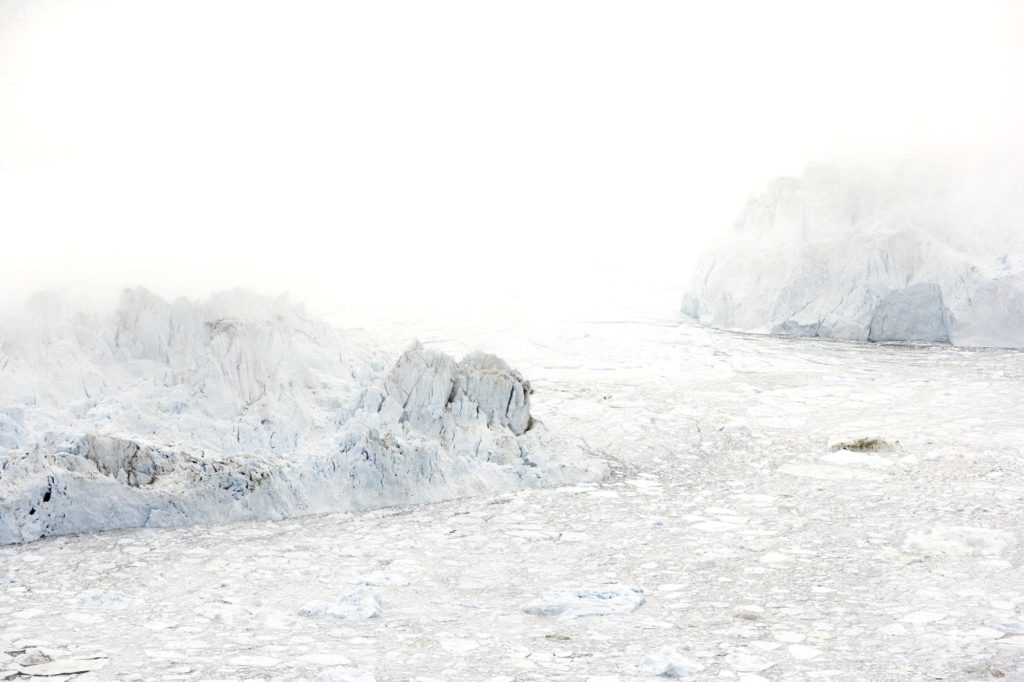
What role can art play in a big issue like climate change?
The scientific is one angle, the political is an other, the artistic is third. It is important to have as many angles on a such urgent matter. Different methods and viewpoints can be an eye-opener for another group. it is usually how inventions are made. Olafur Eliasson, Josef Albers, James Turrell and Florian Maier Aichen are, in my eyes, artists who are an interesting place between art and science.
read more…
Snapshots from Athabasca
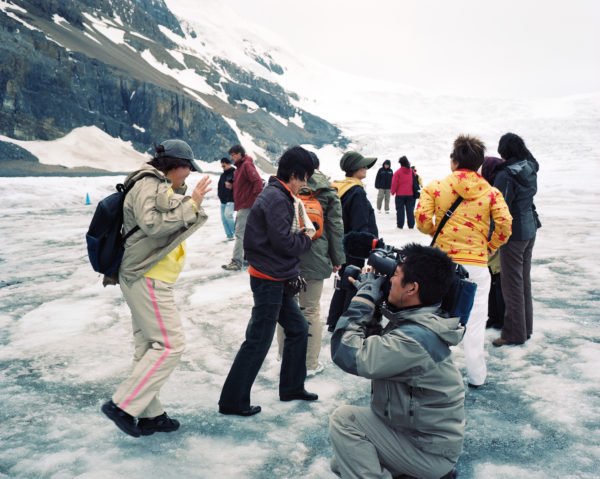
Taking a tongue-in-cheek look at the tourism phenomenon that is Canada’s Athabasca glacier, Andrew Querner captures the surreal juxtaposition of pristine white ice and brightly-attired visitors in his ‘Athabasca’ series. Project Pressure caught up with the Vancouver-based photographer to chat about the glacier and his work…
read more…
